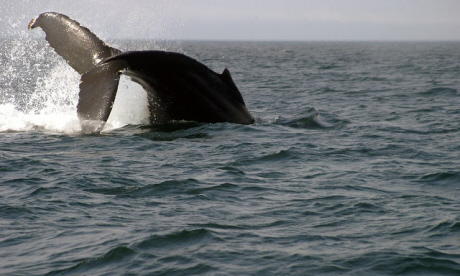
From the Pacific to the Atlantic, Canada is one of the best countries in the world for whale watching. Lyn Hughes looks at some of the top locations
Churchill is the best place in the world to see belugas. Also good for birdwatching, plus the possibility of seeing polar bears and caribou.
Where to go: Churchill.
When to go: Mid-June to mid-August.
The food-rich waters of the St Lawrence River at its confluence with the Saguenay River is home to many species of whale, even though it’s 200 miles upstream from the Gulf of St Lawrence. The river is best known for its belugas, which live here year round, the only population not to winter in the Arctic. There used to be many thousands here, but pollution has led to numbers falling to around 500-600.
Other whales seen in these waters include minkes, fins, humpbacks and even blues.
Where to go: Tadoussac and Baie Sainte Catherine at the mouth of the Saguenay. Longue-Pointe-de-Mingan in the Mingan Archipelago National Park Reserve. Percé on the Gaspé Peninsula at the mouth of the St Lawrence.
When to go: Summer and autumn, as this is when most whales congregate to feed. Belugas are seen year-round, although are so protected that boats are not allowed to approach them.
The endangered northern right whale is the big draw here. They come each summer to feed in the cold food-rich waters of the Bay of Fundy. However, numbers are so low, and they are so slow to reproduce, that there are fears that this species is close to extinction.
More common whales seen include the fin whale, humpback, pilot and minke. Grand Manan Island in particular is also a great area for birdwatching.
Where to go: Grand Manan Island, Deer Island, Campobello Island.
When to go: July, August and September
Digby Neck consists of a skinny peninsula and a couple of islands that jut into the Bay of Fundy. Set closer to the open ocean than the New Brunswick islands, again it’s a great spot for seeing fin, humpback and minke whales, but there is also chance of seeing northern right whales and blue whales.
Cape Breton is at the northern end of Nova Scotia. Known for its rugged beauty, it is also a good place for viewing pilot whales in the summer. Fin whales and other species are sometimes seen.
Where to go: Westport (Brier Island), Tiverton (Long Island), East Ferry on Digby Neck. Cheticamp, Pleasant Bay, Bay St Lawrence on Cape Breton Island.
When to go: June to October for Digby Neck, July and August for Cape Breton.
Newfoundland is rugged and unspoiled, and offers superb opportunities for wildlife lovers. Many species of whale feed in the icy waters here, with humpbacks, minkes, pilot and fin being regularly seen. If you’re lucky you may see blue, northern right or sperm whales. This is also a great spot for seeing puffins and numerous other seabirds.
Where to go: St John’s, Bay Bulls, Witless Bay.
When to go: June, July, early August
British Columbia’s Vancouver Island is blessed with a mild climate and plentiful wildlife. As well as whales, look out for bald eagles, golden eagles, porpoises, Pacific white-sided dolphins and Steller’s sea lions.
Grey whales migrate past here in the spring and autumn, while a few stay on over the summer. The Pacific Rim National Park on the west coast is the best place to spot them either from the shore or on a boat or kayaking trip.
On the other side of the island it is orcas that are the big attraction. Several resident pods live in the waters around here year-round. In the summer, they congregate in Johnstone Strait to feed on the abundant salmon.
Where to go: Tofino and Ucluelet for grey whales. Telegraph Cove and Port McNeill for orcas. Victoria for the possibility of either whale, especially orca.
When to go: June to October is best for orcas, although you may be lucky enough to see residents at other times of the year. March to May for grey whales.